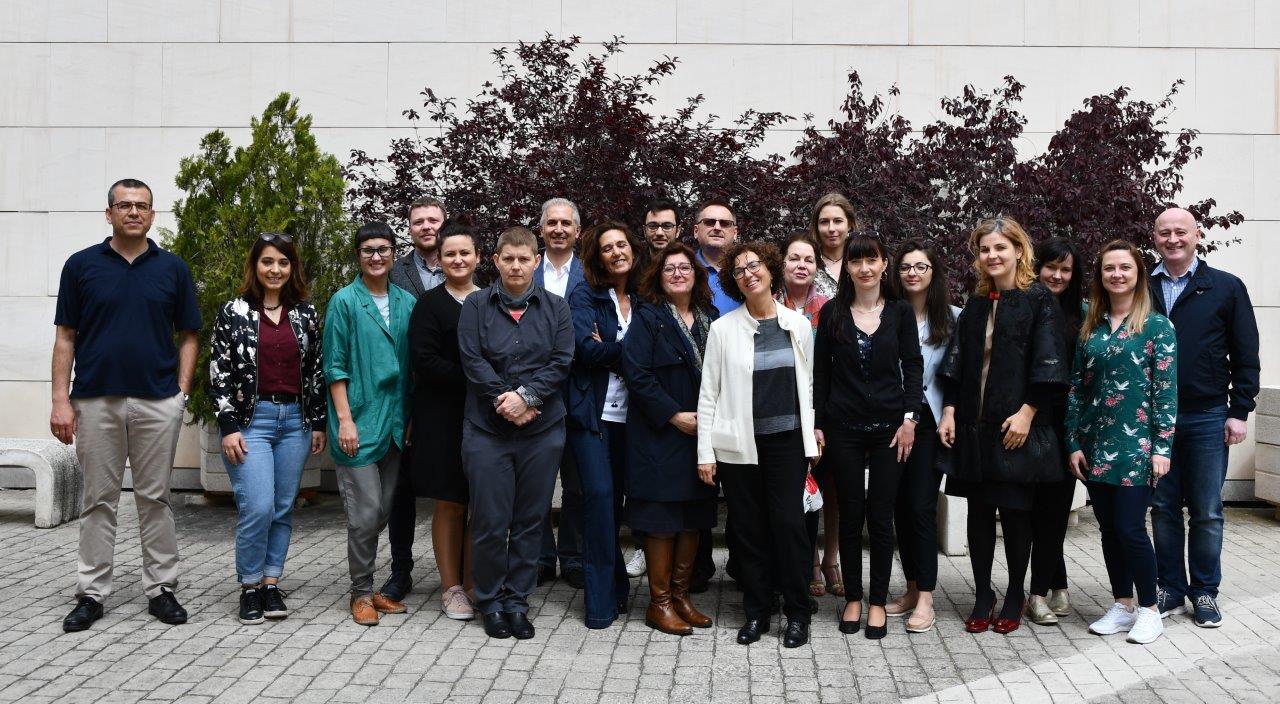Microscopes Reveal U.S. Soy’s Superiority
- Category:
- Animal Utilization
- Event followup

Soy and derivative products received at the processing plants and feed mills often have quality faults. Quality control managers and nutritionists from all over the world are frequently confronted with situations that give rise to doubts about the quality and purity of the raw materials used in animal diets. Less frequently, signs of ingredients spoilage, detection of noxious contaminants, or faulty treatment of ingredients give rise to quality problems, too. This is particularly true and creates serious damage to the use and reputation of soybean meal, a high-quality feed ingredient.
USSEC Europe organized a two-day training on Feed Microscopy at the Universidad Politécnica de Madrid, Spain to increase awareness on U.S. soy quality and transfer knowledge to U.S. soy customers. “The clear aim of this activity was to remind feed mill personnel from key East European U.S. soy customers about this ‘old’ technique of feed evaluation, apparently forgotten more and more due to progress in chemical or rapid methods for feed analysis,” said Dr. Gonzalo Mateos, course director.

The efficiency of the feed microscopy method as a tool to monitor the quality of raw materials was introduced by the USSEC consultants, Dr. Ana Cristina Barroeta Lajusticia, Dr. Roser Sala Pallarès, and Dr. Paloma Rebollar, professors from Barcelona and Madrid Universities. A special advantage of microscopic examination compared to chemical analysis is the fact that it can give results in a matter of minutes, and this first rough information on raw materials’ qualitative characteristics provides a further focus for analytical investigations that need to be carried out in laboratory.
“In commercial feed production today, monitoring the quality of raw materials is the first line of defense against manufacturing poor quality compound feeds. Feed microscopy is extremely helpful in cases where raw materials’ contamination, adulteration, and poor processing are suspected and reasons for jeopardize animal performances. Due to its simplicity, the microscopy method can be carried out with little effort by experienced lab personnel, by using a magnifying glass, proper microscope, and scientific drawings for comparison,” said Dr. Barroeta.
“The color, luster, particle shape, particle size, and effects of processing are visible at the magnification of the stereomicroscope. Soybean seed hulls particles, ground pods, mineral particles, and many other particles associated with adulterants could also be identified and confirmed with the help of a stereomicroscope. Not only that, the microscopic examination of incoming raw materials in the feed mill should be used for detection of toxic seeds, mites and insects, or insect fragments in soybeans and any other raw materials,” added Dr. Sala.
The educators focused attention and reviewed the microscopy tests for soybeans and meal in order to rapidly identify the physical characteristics, to detect quality issues, and to recognize processing faults for soy ingredients.

Samples of different origin beans and meal were examined under the microscope and training participants’ attention was particularly attracted to the distinct physical characteristics of the U.S. soybean meal: high uniformity in particle size and specific golden color. Once placed under the microscope and with proper magnifying techniques, the U.S. soybean samples unveiled the remarkable botanic purity of U.S. beans.


“Our U.S. soy customers encounter unique quality challenges with soy and its derivatives almost daily, and this cannot be always addressed by chemical analysis,” asserted Dr. Iani Chihaia, USSEC consultant - East Europe. “Currently, the feed industry is using chemistry methods for qualitative and quantitative determination, which are time-consuming and often, lab results are released long after the raw material is already consumed. At the USSEC training held in Madrid, the U.S. soy customers understood how microscopy should be used as a rapid method to be used in ‘the first line of defense in feed manufacturing quality control.’ Differentiating between origins, the detection of overheated soybean meal, adulterants like husk, hulls, stones, foreign material, and substitution with cheaper materials can be easily recognized by microscopical examination. Moreover, the microscopy tests of the U.S. soybean meal samples demonstrated the distinct quality of this valuable ingredient: excellent uniformity in particle size and notable purity for the U.S. beans.”
